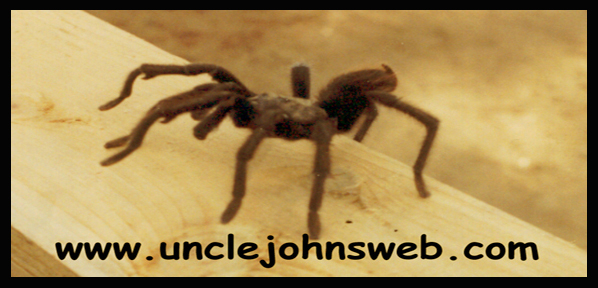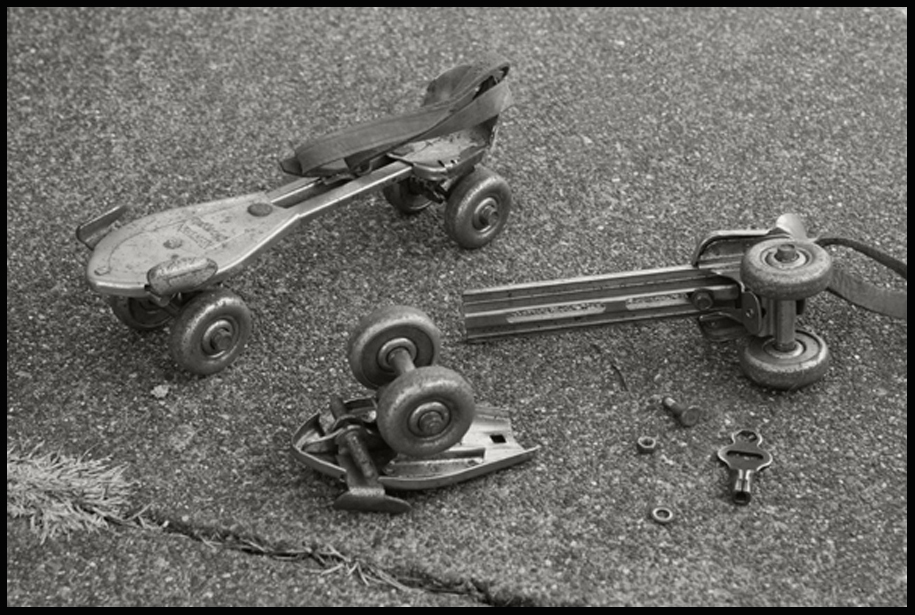



Chapter 1
The Legend of Skateboarding
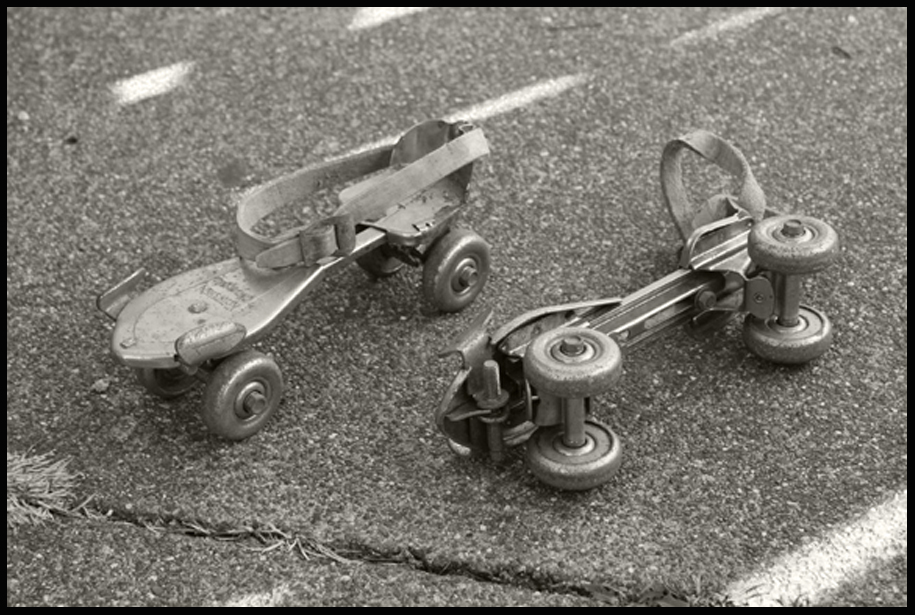
In the foggy back roads of time, my memories, all black and white and flickering, I was 10 years old in 1954. I grew up in Los Angeles County, first Long Beach and San Pedro on the South facing coast, then the San Fernando Valley just to the North of L.A. over the Hollywood Hills. At the time, there was no such thing as a skateboard. There was roller-skating. Unless you were committed enough to own shoe skates, typical roller skates clamped on to the bottom of your leather shoes, gripping the hard edge of the sole near the toes, with a strap around the ankle holding your shoe against the heel. A "skate key" was the wrench that could make the adjustments in the length and width, so that they could fit a wide range of shoe sizes. The wheels were steel as well as everything else but the leather straps.
So as a kid in the 1940's and 50's, among the miscellaneous junk you had in your environment were these skates that had broken, worn out or had lost parts or had been left out in the rain. The adjustability of these clamp-on skates to accommodate all sizes was such that the heel portion and the toe portion could be expanded to about 10 inches and then they came apart. So it was natural and obvious with his innate engineering skills, that a kid would come to the conclusion that these heel and toe elements could be placed even farther apart, creating some kind of vehicle you could sit on or stand on.
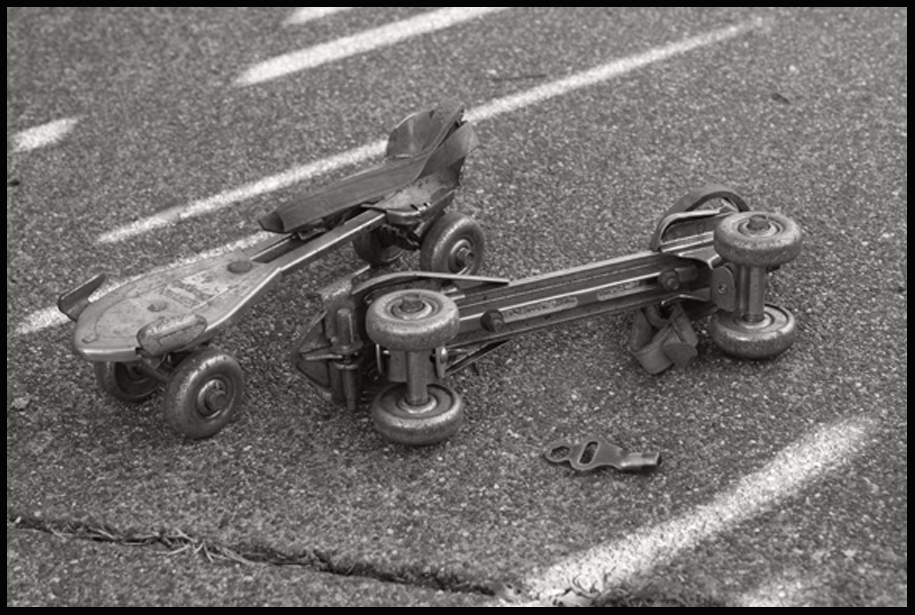

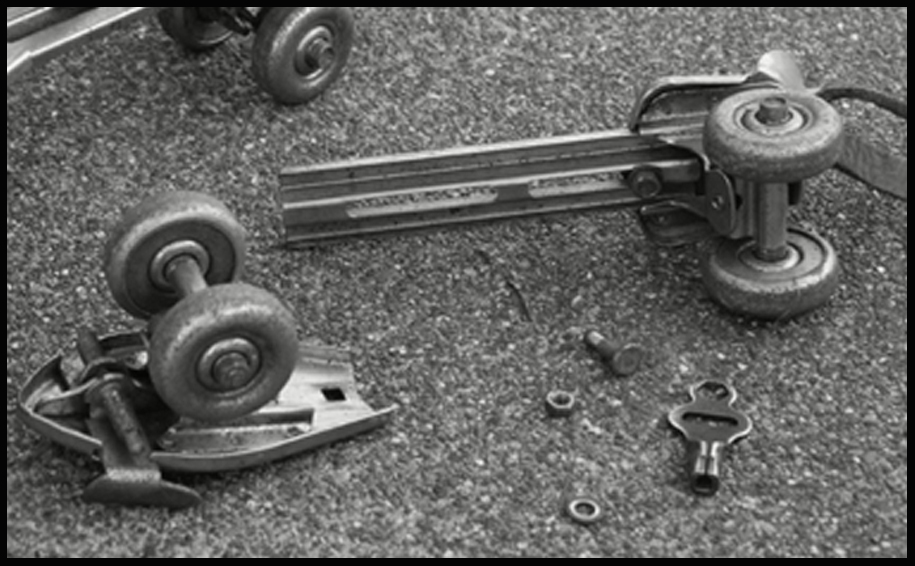
Your typical creation was to nail the heel and toe wheels to a 2" x 4" about 3 feet long, then attach a wooden peach crate or fruit box, common in those days, upright on the nose end of the 2" x 4", nail a 1" x 2" on the top of the box, sticking out far enough to serve as handles, and there you had it; a scooter. These things were fun. They turned the sidewalks into racetracks. We'd made gizmos like this since I was 5 or 6 in San Pedro where there were sidewalks, but after 1950, we lived in the semi-rural San Fernando Valley.
There were no sidewalks in our neighborhood, but at a friend's house just up the street, there was a large smooth driveway and network of concrete walkways... a skatepark. We hammered together a couple of these peach box scooters, and had spent the afternoon hours careening about, piling up on the lawns, until it got dark. At ten years old, I got really wired by the experience. The one sleepwalking episode in my life was the night after one of those sessions. In our house in Northridge, in the middle of the night, my parents were jolted awake by the racket of me on this scooter, with its steel wheels on the hardwood floors as loud as a bowling alley. There I was, in some kind of a trance, riding back and forth in that hall, which was no more than twelve feet long. It was 3:00 in the morning. I know what an obsession that rolling, gliding sensation can be. They led me back to bed and I never woke up.
Kids all over LA, maybe all across the country, made similar scooters. Now the standard legend about skateboarding is that the peach box would break off, and it was discovered that it could still be ridden, hands free; thus, the original skateboard. My peach box never broke off, so somebody else had to invent "sidewalk surfing."
In 1958, we moved to Carpinteria, up the coast toward Santa Barbara, and I took up ocean surfing. I didn't get on an actual skateboard until about 1972.




Copyright © 2017, 2022 John Oliver
All Rights Reserved
mail@unclejohnsweb.com
